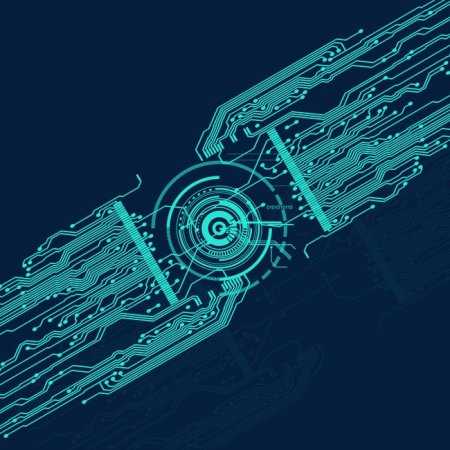
Because printed circuit boards are so widely used, even small changes in consumer trends and emerging technologies can have an impact on the PCB market, including how it is used and manufactured.
Although there may be more time to come, here are four major technology trends that are expected to stay at the top of the PCB market and take the industry in different directions for a long time to come.
When computers were first invented, some people might spend their entire lives working on computers that took up an entire wall. Today, even calculators and watches have several orders of magnitude more computing power than those behemoths, let alone smartphones.
The entire manufacturing sector is in the sights of a whirlwind of innovation, most of which is geared towards miniaturization. Our computers are getting smaller and smaller, and so is everything else.
Across the consumer community, there seems to be a growing preference for smaller electronics. Miniaturization means we can build smaller, more efficient houses and control them. Cheaper, more efficient cars and so on.
As PCB is the most important basic component in electronic products, PCB must pursue miniaturization relentlessly.
Especially in the PCB market, this means adopting high density interconnection technology. Further improvements in HDI technology will further reduce the size of PCBS, reaching more and more industries and commodities in the process.
Now the PCB industry is affected by some very practical factors such as climate and social pressure. The MANUFACTURING process of PCB needs to keep up with the trend of The Times and evolve towards sustainable development.
In fact, PCB manufacturers are always a hot topic when it comes to the intersection of development and environmental protection. The introduction of lead-free solder, for example, requires more energy-intensive manufacturing processes. Since then, the industry has been forced to find a new balance.
In other ways, PCB has been a leader. Polychlorinated biphenyls (PCBS) have traditionally been made from fiberglass as a base material, and most people consider them to be relatively environmentally friendly. Further developments may allow fiberglass to be replaced by materials more suitable for high data transfer rates, such as resin-coated copper and liquid crystal polymers.
As all types of manufacturing efforts adjust their footprints to a changing planet, the link between social needs and production and business convenience will become a new norm.
We have briefly described the fundamentals of PCB technology and how they can achieve greater complexity on thinner circuit boards. Now we put this concept into practice. PCB has been decreasing in thickness and adding features every year, and now we have many practical applications for small circuit boards.
Consumer electronics as a whole has been an important driver of PCB manufacturing and usage over the past few decades. Now that wearables have entered the space and are starting to become reliable consumer product types, PCBS will follow.
Like smartphones, wearable technology requires printed circuit boards, but they go a step further. They value design efficiency far more than past technologies can achieve.
The introduction of modern digital technology into medicine has been one of the greatest developments in modern human history. Today technology means we can safely store patient records in the cloud and manage them through apps and smartphones.
However, rapid advances in medical technology have affected PCB in some very interesting ways, and vice versa. The on-board camera is a new development that can even attach ultra-high-fidelity cameras to the PCB itself. The medical implications are enormous: when a camera needs to be inserted, swallowed or otherwise introduced into the body, the smaller the better. Some onboard cameras are now small enough to be swallowed.
As for public oversight, on-board cameras and smaller PCBS can also help. For example, dashcams and vest cameras have shown a useful role in mitigating illegal behavior, and many consumer technologies have emerged to meet this need. Many popular mobile-accessory companies are exploring ways to provide drivers with ever smaller, less dramatic dashboard cameras, including and including connected hubs that can interact with your phone while you’re driving.
New consumer technologies, medical advances, manufacturing breakthroughs, and strong generational trends are fascinating. Incredibly, PCB has a chance to be at the heart of it all.
That means it’s an exciting time to get into the field. What other technologies will bring new developments to the PCB market in the future? Let’s keep looking for answers.














XPCB Limited is a premium PCB & PCBA manufacturer based in China.
We specialize in multilayer flexible circuits, rigid-flex PCB, HDI PCB, and Rogers PCB.
Quick-turn PCB prototyping is our specialty. Demanding project is our advantage.
Tel : +86-136-3163-3671
Fax : +86-755-2301 2705
Email : info@x-pcb.com
© 2024 - XPCB Limited All Right Reserve